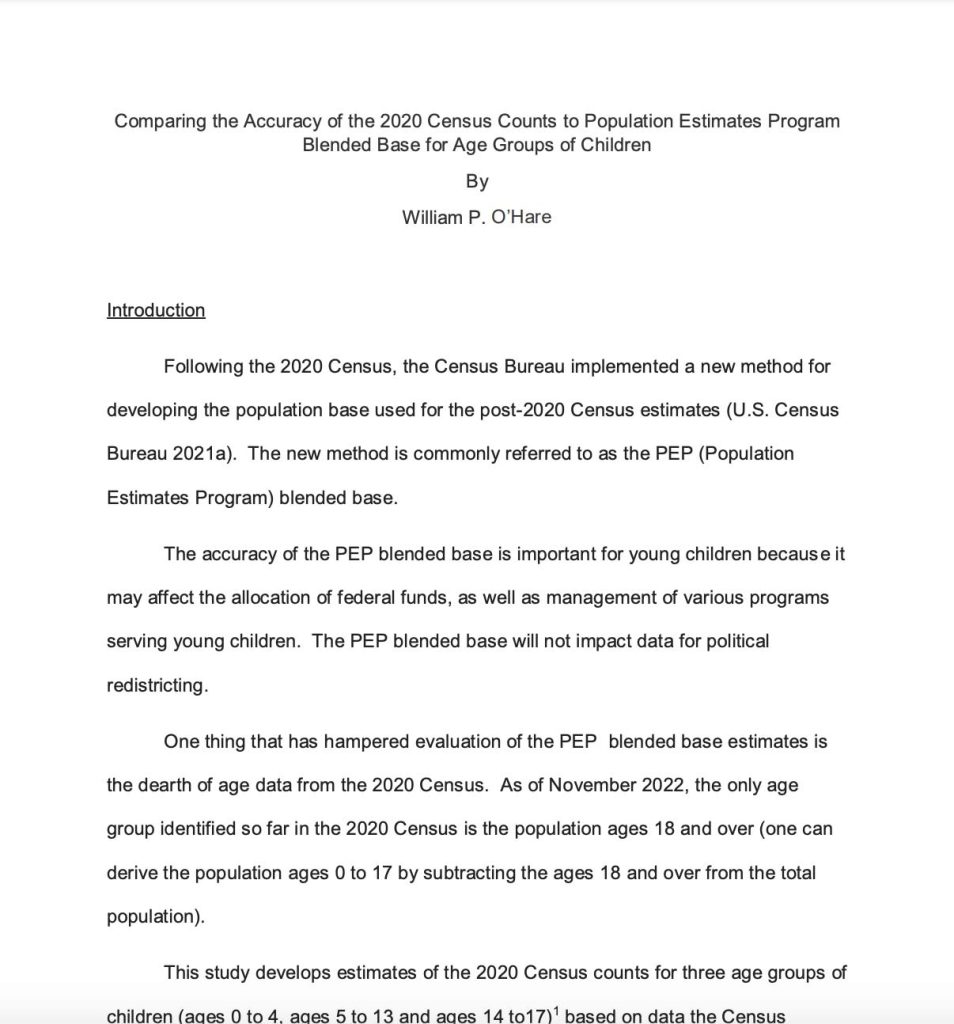Following the 2020 Census, the Census Bureau implemented a new method for developing the population base used for the post-2020 Census estimates (U.S. Census Bureau 2021a). The new method is commonly referred to as the PEP (Population Estimates Program) blended base.
The accuracy of the PEP blended base is important for young children because it may affect the allocation of federal funds, as well as management of various programs serving young children. The PEP blended base will not impact data for political redistricting.
One thing that has hampered evaluation of the PEP blended base estimates is the dearth of age data from the 2020 Census. As of November 2022, the only age group identified so far in the 2020 Census is the population ages 18 and over (one can derive the population ages 0 to 17 by subtracting the ages 18 and over from the total population).
This study develops estimates of the 2020 Census counts for three age groups of children (ages 0 to 4, ages 5 to 13 and ages 14 to17)[1] based on data the Census Bureau has already released along with some simple algebra. These estimated Census counts for the three age groups are compared to the DA middle series estimates to detect differences. The PEP blended base estimates are also compared to the DA middle series estimates for the same three age groups to assess how well the PEP blended base corrects for the high net undercount of young children in the 2020 Census.
Since the Demographic Analysis (DA) estimates are one of the prime benchmarks used by the Census Bureau (2020 and 2022a) to assess Census accuracy, differences between DA and the Census counts as well as DA and the PEP blended base can be seen as errors. O’Hare et al. (2016) show DA is a particularly useful benchmark for assessing census accuracy for young children. This study compares the size of errors in 2020 Census counts to size of errors in the PEP blended base when compared to the DA middle series.
Analysis shows the PEP blended base does a good job of correcting for the high net undercount of young children (age 0 to 4) in the 2020 Census and the new methodology provides some corrections for the population ages 5 to 13. However, there is little difference between the Census counts and the PEP estimates for ages 14 to17.
[1] The Census Bureau calls anyone who has not celebrated their first birthday age 0.









